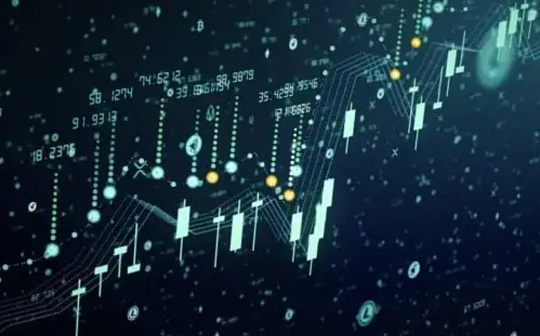-
When is the 2024 Bitcoin halving date
-
Date:2024-08-20 18:40:47 Channel:Build Read:
The mystery of the 2024 Bitcoin halving: revealing the truth of the critical moment
Bitcoin, a digital currency that has been popular around the world for nearly a decade, has attracted the attention of countless investors with its unique decentralized characteristics and limited supply. In the life cycle of Bitcoin, the halving event is undoubtedly a critical moment, affecting market trends and investor decisions. When will the Bitcoin halving in 2024 take place? This question not only concerns the future of digital currencies, but also has a profound impact on the entire cryptocurrency market.
The Bitcoin halving, which occurs every four years, means that the reward for each block produced on the Bitcoin network will be reduced by half. For Bitcoin holders and investors, this event is not only a change in the technical level, but also a turning point in market psychology. According to the Bitcoin issuance mechanism, the current block reward is 6.25 Bitcoins, and it is expected that in May 2024, when the 840,000th block is mined, the reward will be reduced to 3.125 Bitcoins. The importance of this time node is self-evident, because it not only marks the further scarcity of Bitcoin supply, but may also trigger huge market fluctuations.
The historical influence of halving events is obvious. Looking back at the halving events in 2012 and 2016, the market generally showed a strong upward trend before and after the halving. In 2012, after the first halving, the price of Bitcoin soared from $12 to $1,200; in 2016, after the second halving, the price of Bitcoin rose from $450 to nearly $20,000. These data undoubtedly provide strong support for the halving event in 2024, and many analysts and investors are therefore full of expectations for future price trends.
However, any investment comes with risks, especially in the cryptocurrency market. Although historical data seems optimistic, the volatility of the market also makes people doubtful. Factors affecting the price of Bitcoin include not only the halving itself, but also multiple factors such as the global economic situation, policies and regulations, and investor sentiment. For example, after the Bitcoin halving in 2020, although the market performed strongly in the short term, the subsequent global epidemic and economic policy adjustments in various countries also caused Bitcoin prices to experience drastic fluctuations. Therefore, while investors are looking forward to the opportunities brought by the halving in 2024, they should also carefully assess the potential risks.
In addition, the halving event in 2024 may also attract more attention from institutional investors. As Bitcoin is gradually regarded as a kind of digital gold, more and more institutional investors have begun to include it in their asset allocation. This trend has become more obvious in the past few years, especially in 2020 and 2021, when many large companies and hedge funds have invested in Bitcoin. The entry of institutional investors has not only brought more capital inflows to the Bitcoin market, but also changed the structure of the market. Compared with individual investors, institutional investors tend to pay more attention to long-term value and risk management, and their participation may make the Bitcoin market more mature.
In this context, the Bitcoin halving in 2024 will be an event that cannot be ignored. Many analysts predict that the price of Bitcoin will rise again after the halving, and some even boldly predict that the price of Bitcoin may break through the historical high. However, these predictions are not without controversy. Some experts believe that the market has already fully priced in the halving event in advance, and the actual price performance may be contrary to expectations. Therefore, before investing, sufficient market research and risk assessment are essential.
In addition to market factors, technological progress is also an important factor affecting the future trend of Bitcoin. The security and scalability issues of the Bitcoin network have always been hot topics in the industry. With the popularity of Bitcoin, network congestion and transaction fees have become increasingly prominent. Solving these technical problems will directly affect the attractiveness and user experience of Bitcoin. The continuous development of blockchain technology, especially the promotion of second-layer solutions such as the Lightning Network, may improve the transaction efficiency of Bitcoin to a certain extent and provide better services for users.
Against the backdrop of growing uncertainty in the global economy, many investors have begun to view Bitcoin as a safe-haven asset. In recent years, as inflationary pressures have risen and volatility in traditional financial markets has intensified, Bitcoin’s characteristics as a scarce resource have made it a favorite in the market to a certain extent. Especially in some countries, where legal tender has depreciated severely, residents view Bitcoin as a tool for preserving value. This phenomenon is particularly evident in countries such as Argentina and Venezuela, where residents have bought Bitcoin to counter the risk of depreciation of their own currencies.
However, although Bitcoin has gained a certain degree of recognition in many countries, its legitimacy still faces challenges worldwide. Governments have different regulatory policies on cryptocurrencies, and some countries even completely ban Bitcoin transactions. This uncertainty may affect investor confidence and thus have a negative impact on the price of Bitcoin. Therefore, paying attention to the policy trends of various countries and adjusting investment strategies in a timely manner will be a challenge that investors must face.
When looking to the future, we should not only focus on the Bitcoin halving event itself, but also analyze it in a broader economic and technological context. As an emerging asset class, the future development of Bitcoin not only depends on the supply changes brought about by the halving, but is also closely related to multiple factors such as the global economic structure, technological progress, and policy environment. While seizing opportunities, investors should also remain rational and avoid making impulsive decisions due to market sentiment fluctuations.
By deeply analyzing the event of Bitcoin halving in 2024, we can see that it is not only a change at the technical level, but also the result of multiple factors such as market psychology, policy environment, and technological progress. As investors, understanding the logic behind these will help us make wiser choices in future investments. In this digital currency market full of variables, only by continuous learning and adaptation can we seize opportunities in fluctuations and meet future challenges.
The four most famous international exchanges:
Binance INTL
OKX INTL
Gate.io INTL
Huobi INTL




China Line APP DL China Line APP DL
China Line APP DL
China Line APP DL
Note: The above exchange logo is the official website registration link, and the text is the APP download link.

Bitcoin is one of the earliest and most advanced cryptocurrencies. It has a significant impact on market development. Therefore, investors will not miss any event that may change the price of Bitcoin and lead to market changes. The most anticipated event is the Bitcoin halving. Since 2009, Bitcoin has experienced three halvings. Each halving will cause a large fluctuation in the price of Bitcoin. The currency circle is also paying attention to the date of the Bitcoin halving in 2024. According to the forecast, the time is about April 28, 2024. Next, the editor of the currency circle will tell you in detail.
When is the Bitcoin halving date in 2024?
According to the predictions, the Bitcoin 2024 halving date is on April 28, 2024. Bitcoin halving is an event where the Bitcoin mining reward is reduced by half, thus reducing the supply of new Bitcoins on the market. New Bitcoins are released through the mining process, where miners solve a highly complex computational puzzle to verify and secure blocks of transactions on the Bitcoin network. In return for their efforts, miners are rewarded with newly minted Bitcoins.
Since the price of Bitcoin increases after each halving, Bitcoin owners benefit from the rise in the value of their asset. Halving events tend to be a good thing for demand for Bitcoin due to the reduction in supply, and demand is often seen as a major factor driving future price increases for Bitcoin and other altcoins.
Traders must also be aware of the possible negative impact of the Bitcoin halving. Some analysts predict that the halving could cause losses for other altcoins. After the 2019 Bitcoin bull run, many smaller altcoins suffered losses as altcoin investors turned to Bitcoin. Since the mining cost suddenly doubled, miners may sell their reward Bitcoins, and Bitcoin may face a huge risk of collapse.
What is the impact of Bitcoin halving on the market?
Bitcoin halvings are often accompanied by price fluctuations, which can be positive or negative. Usually, price volatility increases before and after the halving event. Traders can use volatility to profit. However, drastic price fluctuations can also make pricing patterns elusive, thus affecting the execution of trading strategies.
From historical data, after the halving event, the price of Bitcoin against the US dollar has appreciated. For example, after the halving event in 2012, the price of BTC/USD soared from around $11 to more than $1,000 in one year, an increase of 80 times. After the halving event in 2016, the price of Bitcoin rose again. BTC remained in the price range of $580-700 for several months until it slowly rose to $900 at the end of the year.
It is worth mentioning that the price of Bitcoin did not rise immediately after the halving on May 11, 2020, as factors such as the coronavirus actually caused Bitcoin to depreciate. Despite this, in July 2020, Bitcoin rose to over $12,000.
For the entire crypto market, Bitcoin tends to be a bellwether for market trends. When Bitcoin rises, most major cryptocurrencies usually remain up for quite a long time, so altcoins such as Ethereum and Litecoin are positively correlated with Bitcoin bull runs. The term "rising tide lifts all boats" is a good way to describe the impact on altcoins, as altcoins have been in a bull run after each halving in the past. Although the global economy is in turmoil and almost all assets are suffering, Bitcoin owners may reap the benefits of the halving event again.
The above is the answer to the question of when the Bitcoin halving date will be in 2024. As a native cryptocurrency, Bitcoin's halving cycle promotes innovation and resilience, making it different from fiat currencies. The halving will be another milestone in the development of Bitcoin as a new and unique monetary commodity. Although historical patterns indicate that prices will move positively after the event, Bitcoin is a complex ecosystem with economic, technological and social factors. Although there is uncertainty about what will happen after the halving, it still highlights the fundamental nature of Bitcoin, that is, it is a decentralized, finite, deflationary means of storing value in an environment where traditional economic paradigms are constantly challenged.
When analyzing the impact of Bitcoin halving on the market, we cannot ignore the role of market sentiment. Many investors have extremely high expectations for the halving event, and this sentiment may form a self-fulfilling prophecy when the halving approaches. Discussions within the Bitcoin community, media reports, and hot discussions on social platforms are constantly amplifying this sentiment. In this case, investors' behavior is often affected by group psychology, forming a "follow the trend" effect. This phenomenon is particularly evident in the cryptocurrency market, especially in today's social media prevalence. The speed and scope of information dissemination allow market sentiment to change rapidly in a short period of time.
I'll answer.
Articles related to tags
- US Senator Bitcoin can vote with its feet Don’t create a hosti
- How to trade OK Wallet coins OK Wallet Trading Tutorial
- Taking stock of the mysterious creators of Bitcoin Who are thes
- How to download the Pancake Exchange APP Pancakeswap official w
- How to buy Litecoin Cash LCC Currency Buying and Trading Tutori
- What does Bitcoin quarterly contract mean Popular explanations
- Being bombarded by Ponzi scheme and environmental public opinion
- Rich Dad author Global economy may collapse Bitcoin is worth $
- 多链模因 Dogeverse预售只剩一周:它会成为2024年最大的Meme币吗
- Bitcoin price dropped by half What are Bitcoin miners and minin
user
2512
Ask
972K+
reading
0
Answer
3H+
Upvote
2H+
Downvote
-
 Artery Network(ARTR幣)在那裏挖?ArteryNetwork(ARTR幣)是一種新興的加密貨幣,它的採礦過程與比特幣和以太幣等其他加密貨幣類似。ARTR幣的挖礦過程是通過計算機資源解決複雜的數學問題來獲取新的幣。這一過程需要大量的計算能力和電力,因此挖礦者需要投入相應的硬件和電力成本。 A2025-03-26 21:33:09
Artery Network(ARTR幣)在那裏挖?ArteryNetwork(ARTR幣)是一種新興的加密貨幣,它的採礦過程與比特幣和以太幣等其他加密貨幣類似。ARTR幣的挖礦過程是通過計算機資源解決複雜的數學問題來獲取新的幣。這一過程需要大量的計算能力和電力,因此挖礦者需要投入相應的硬件和電力成本。 A2025-03-26 21:33:09 -
 Litbinex Coin(LTB幣)走勢如何LitbinexCoin LTB幣 作為一種加密貨幣,其價格走勢取決於市場供求和投資者對其價值的認知。在過去的一段時間裡,LTB幣的價格可能出現了一些波動,這可能是由於市場情緒、新聞事件或技術因素所引起的。 在過去的幾個月中,全球加密貨幣市場經歷了一些波動2025-03-26 21:33:03
Litbinex Coin(LTB幣)走勢如何LitbinexCoin LTB幣 作為一種加密貨幣,其價格走勢取決於市場供求和投資者對其價值的認知。在過去的一段時間裡,LTB幣的價格可能出現了一些波動,這可能是由於市場情緒、新聞事件或技術因素所引起的。 在過去的幾個月中,全球加密貨幣市場經歷了一些波動2025-03-26 21:33:03 -
 Starbound(SBD幣)最新動態SBD幣,即Starbound,是一种基于区块链技术的加密货币,旨在为用户提供一种快速、安全和低成本的支付方式。最近,Starbound团队宣布了一系列重大动态,以提升其在加密货币市场的地位和影响力。 首先,Starbound团队宣布他们已经与几家知名的加2025-03-26 21:32:59
Starbound(SBD幣)最新動態SBD幣,即Starbound,是一种基于区块链技术的加密货币,旨在为用户提供一种快速、安全和低成本的支付方式。最近,Starbound团队宣布了一系列重大动态,以提升其在加密货币市场的地位和影响力。 首先,Starbound团队宣布他们已经与几家知名的加2025-03-26 21:32:59 -
 Catcoin(CATS幣)最新新聞最新消息指出,Catcoin(CATS幣)在近期取得了巨大的成功,吸引了越來越多投資者的關注。這種加密貨幣是專為貓主人和貓愛好者而設計的,旨在建立一個支持貓咪社群的加密支付系統。 Catcoin的價值一直在不斷上漲,吸引了許多散戶和機構投資者的投入。這種加2025-03-26 21:32:54
Catcoin(CATS幣)最新新聞最新消息指出,Catcoin(CATS幣)在近期取得了巨大的成功,吸引了越來越多投資者的關注。這種加密貨幣是專為貓主人和貓愛好者而設計的,旨在建立一個支持貓咪社群的加密支付系統。 Catcoin的價值一直在不斷上漲,吸引了許多散戶和機構投資者的投入。這種加2025-03-26 21:32:54 -
 YFPI(YFPI幣)最新資訊YFPIYFPI幣是一種加密貨幣,它是由一個名為YFPI的去中心化金融平台所發行的。YFPI的目標是成為一個具有高度流動性和穩定價值的加密貨幣,讓用戶可以更方便地進行交易和支付。 最近,YFPI的價格一直在波動,受到市場情緒和投資者信心的影響。儘管如此,Y2025-03-26 21:32:49
YFPI(YFPI幣)最新資訊YFPIYFPI幣是一種加密貨幣,它是由一個名為YFPI的去中心化金融平台所發行的。YFPI的目標是成為一個具有高度流動性和穩定價值的加密貨幣,讓用戶可以更方便地進行交易和支付。 最近,YFPI的價格一直在波動,受到市場情緒和投資者信心的影響。儘管如此,Y2025-03-26 21:32:49 -
 WaveEduCoin(WEC幣)是詐騙?WaveEduCoinWEC幣是一個虛擬貨幣項目,宣稱旨在為教育領域提供解決方案。然而,有人對這個項目提出了質疑,認為WaveEduCoinWEC幣可能是一個詐騙項目。 首先,WaveEduCoinWEC幣的團隊背景和專業性受到質疑。許多投資者發現他們在官2025-03-26 21:32:43
WaveEduCoin(WEC幣)是詐騙?WaveEduCoinWEC幣是一個虛擬貨幣項目,宣稱旨在為教育領域提供解決方案。然而,有人對這個項目提出了質疑,認為WaveEduCoinWEC幣可能是一個詐騙項目。 首先,WaveEduCoinWEC幣的團隊背景和專業性受到質疑。許多投資者發現他們在官2025-03-26 21:32:43 -
 Pegs Shares(PEGS幣)符合當地法律嗎PegsShares(PEGS幣)是一種加密貨幣,目前在市場上並無法得到明確的法律規範。然而,對於加密貨幣的法律規定在各國各地可能有所不同,因此在使用和投資這種加密貨幣時需要謹慎對待。 在一些國家,加密貨幣被視為合法的貨幣形式,並受到相應的法律保護。然而,2025-03-26 21:32:36
Pegs Shares(PEGS幣)符合當地法律嗎PegsShares(PEGS幣)是一種加密貨幣,目前在市場上並無法得到明確的法律規範。然而,對於加密貨幣的法律規定在各國各地可能有所不同,因此在使用和投資這種加密貨幣時需要謹慎對待。 在一些國家,加密貨幣被視為合法的貨幣形式,並受到相應的法律保護。然而,2025-03-26 21:32:36 -
 JUS Token(JUS幣)總部在那JUSTokenJUS幣是一家总部位于新加坡的加密货币公司。新加坡是一个国际金融中心,拥有完善的法律体系和监管机制,吸引了许多加密货币和区块链公司选择在这里设立总部。 JUSTokenJUS幣总部位于新加坡的好处包括: 1 法律体系完善:新加坡的法律体系健2025-03-26 21:32:30
JUS Token(JUS幣)總部在那JUSTokenJUS幣是一家总部位于新加坡的加密货币公司。新加坡是一个国际金融中心,拥有完善的法律体系和监管机制,吸引了许多加密货币和区块链公司选择在这里设立总部。 JUSTokenJUS幣总部位于新加坡的好处包括: 1 法律体系完善:新加坡的法律体系健2025-03-26 21:32:30 -
 I-COIN(ICN幣)非法傳銷ICN幣是一種加密貨幣,類似於比特幣或以太幣,通過區塊鏈技術進行交易和存儲價值。然而,近年來有一些人利用ICN幣進行非法傳銷活動,給投資者帶來了風險和損失。 非法傳銷是指通過招聘下線、忽悠投資者參與項目來賺取高額回報的行為。在ICN幣的非法傳銷中,一些不法2025-03-26 21:32:27
I-COIN(ICN幣)非法傳銷ICN幣是一種加密貨幣,類似於比特幣或以太幣,通過區塊鏈技術進行交易和存儲價值。然而,近年來有一些人利用ICN幣進行非法傳銷活動,給投資者帶來了風險和損失。 非法傳銷是指通過招聘下線、忽悠投資者參與項目來賺取高額回報的行為。在ICN幣的非法傳銷中,一些不法2025-03-26 21:32:27 -
 Glitch Protocol(GLCH幣)交易合法不GlitchProtocol(GLCH幣)是一種加密貨幣,其交易合法性取決於當地政府對加密貨幣的規定和監管。在一些國家,加密貨幣被視為合法的資產,可以自由交易和使用。然而,在一些國家,政府可能對加密貨幣實施嚴格的監管措施,甚至禁止其交易。 若要確定Glit2025-03-26 21:32:20
Glitch Protocol(GLCH幣)交易合法不GlitchProtocol(GLCH幣)是一種加密貨幣,其交易合法性取決於當地政府對加密貨幣的規定和監管。在一些國家,加密貨幣被視為合法的資產,可以自由交易和使用。然而,在一些國家,政府可能對加密貨幣實施嚴格的監管措施,甚至禁止其交易。 若要確定Glit2025-03-26 21:32:20
-
 Cat(CAT幣)的交易量CAT幣是一種虛擬貨幣,目前在加密貨幣市場中交易量相對較小。然而,隨著加密貨幣市場的不斷發展和成長,CAT幣的交易量也在逐漸增加。 CAT幣的交易量取決於市場需求和供應情況,以及交易所的交易活動。一般來說,CAT幣的交易量可能會受到市場情緒、新聞事件、技術2025-03-26 21:34:43
Cat(CAT幣)的交易量CAT幣是一種虛擬貨幣,目前在加密貨幣市場中交易量相對較小。然而,隨著加密貨幣市場的不斷發展和成長,CAT幣的交易量也在逐漸增加。 CAT幣的交易量取決於市場需求和供應情況,以及交易所的交易活動。一般來說,CAT幣的交易量可能會受到市場情緒、新聞事件、技術2025-03-26 21:34:43 -
 紅域(巧克力)(QKL幣)涉嫌詐騙紅域(巧克力)(QKL幣)是一種虛擬貨幣,近期涉嫌詐騙的傳聞不斷。根據一些用戶的投訴和報導,有人聲稱在投資這個虛擬貨幣時遭受了損失,而且無法取回投資的資金。 在這種情況下,投資者應該格外小心,避免受騙。首先,要確保所投資的虛擬貨幣是合法的,有穩定的背景和可2025-03-26 21:34:37
紅域(巧克力)(QKL幣)涉嫌詐騙紅域(巧克力)(QKL幣)是一種虛擬貨幣,近期涉嫌詐騙的傳聞不斷。根據一些用戶的投訴和報導,有人聲稱在投資這個虛擬貨幣時遭受了損失,而且無法取回投資的資金。 在這種情況下,投資者應該格外小心,避免受騙。首先,要確保所投資的虛擬貨幣是合法的,有穩定的背景和可2025-03-26 21:34:37 -
 Yukon(YUKON幣)倒閉了最近有傳聞指出,Yukon(YUKON幣)可能即將倒閉。這個消息引起了市場的驚慌和困憂,許多投資者和持有者都在擔心他們的資金和投資是否會受到影響。 Yukon是一種加密貨幣,最初是在2017年推出的。它在推出後吸引了很多投資者和用戶,因為它的技術和應用前景2025-03-26 21:34:33
Yukon(YUKON幣)倒閉了最近有傳聞指出,Yukon(YUKON幣)可能即將倒閉。這個消息引起了市場的驚慌和困憂,許多投資者和持有者都在擔心他們的資金和投資是否會受到影響。 Yukon是一種加密貨幣,最初是在2017年推出的。它在推出後吸引了很多投資者和用戶,因為它的技術和應用前景2025-03-26 21:34:33 -
 AGPC TOKEN(AGPC幣)不合法AGPCTOKENAGPC幣 是一种虚拟货币,它并不是任何国家的法定货币,也不受到任何监管机构的监管。因此,AGPCTOKEN 不具备合法货币的属性,也没有法律地位。在很多国家和地区,虚拟货币并不被认可为合法支付工具,因此使用AGPCTOKEN 进行交易可2025-03-26 21:34:27
AGPC TOKEN(AGPC幣)不合法AGPCTOKENAGPC幣 是一种虚拟货币,它并不是任何国家的法定货币,也不受到任何监管机构的监管。因此,AGPCTOKEN 不具备合法货币的属性,也没有法律地位。在很多国家和地区,虚拟货币并不被认可为合法支付工具,因此使用AGPCTOKEN 进行交易可2025-03-26 21:34:27 -
 RentalChain(RNL幣)在中國禁止RentalChainRNL幣是一种基于区块链技术的租赁服务平台的代币,旨在通过区块链技术实现租赁行业的数字化和智能化。然而,由于中国政府对加密货币的监管政策非常严格,目前RentalChain在中国被禁止。 中国政府自2017年开始加强对加密货币的监管,2025-03-26 21:34:19
RentalChain(RNL幣)在中國禁止RentalChainRNL幣是一种基于区块链技术的租赁服务平台的代币,旨在通过区块链技术实现租赁行业的数字化和智能化。然而,由于中国政府对加密货币的监管政策非常严格,目前RentalChain在中国被禁止。 中国政府自2017年开始加强对加密货币的监管,2025-03-26 21:34:19 -
 FlapXCoin(FLAPX幣)是空氣幣FlapXCoinFLAPX幣並不是空氣幣,而是一種虛擬加密貨幣。空氣幣通常指的是沒有實際的價值或用途,只是為了炒作而被創建出來的虛擬貨幣。然而,FlapXCoin是一種經過加密技術保護的數字貨幣,具有真實的價值和用途。 FlapXCoin是通過區塊鏈技術2025-03-26 21:34:13
FlapXCoin(FLAPX幣)是空氣幣FlapXCoinFLAPX幣並不是空氣幣,而是一種虛擬加密貨幣。空氣幣通常指的是沒有實際的價值或用途,只是為了炒作而被創建出來的虛擬貨幣。然而,FlapXCoin是一種經過加密技術保護的數字貨幣,具有真實的價值和用途。 FlapXCoin是通過區塊鏈技術2025-03-26 21:34:13 -
 CPUcoin(CPU幣)是什麽CPUcoin是一种基于区块链技术的加密货币,旨在通过共享计算资源来提高计算机性能和效率。CPUcoin的目标是利用闲置的计算资源,例如个人计算机或数据中心的服务器,来为用户提供更好的计算服务。CPUcoin的核心概念是将计算资源共享化,使得用户可以通过共2025-03-26 21:34:07
CPUcoin(CPU幣)是什麽CPUcoin是一种基于区块链技术的加密货币,旨在通过共享计算资源来提高计算机性能和效率。CPUcoin的目标是利用闲置的计算资源,例如个人计算机或数据中心的服务器,来为用户提供更好的计算服务。CPUcoin的核心概念是将计算资源共享化,使得用户可以通过共2025-03-26 21:34:07 -
 XMZ(XMZ幣)APP下載地址XMZ(XMZ幣)是一種加密貨幣,它是基於區塊鏈技術的去中心化數字貨幣。如果您想要使用XMZ幣進行交易或投資,您可以下載XMZ的官方應用程序來管理您的資產。 XMZ應用程序可以讓您輕鬆地查看您的賬戶餘額、進行轉賬和收款。同時,您還可以通過應用程序查看最新的2025-03-26 21:34:02
XMZ(XMZ幣)APP下載地址XMZ(XMZ幣)是一種加密貨幣,它是基於區塊鏈技術的去中心化數字貨幣。如果您想要使用XMZ幣進行交易或投資,您可以下載XMZ的官方應用程序來管理您的資產。 XMZ應用程序可以讓您輕鬆地查看您的賬戶餘額、進行轉賬和收款。同時,您還可以通過應用程序查看最新的2025-03-26 21:34:02 -
 Sergey Save Link(SSL幣)近期會暴跌?近期,有一些市場分析師對SergeySaveLink SSL幣未來的走勢感到悲觀,認為它可能會暴跌。這種預測主要基於幣值波動性高和市場不穩定的情況下,SSL幣可能會受到影響而下跌。 首先,SSL幣是一種虛擬加密貨幣,價值受到市場供需和投資者情緒的影響。在市2025-03-26 21:33:58
Sergey Save Link(SSL幣)近期會暴跌?近期,有一些市場分析師對SergeySaveLink SSL幣未來的走勢感到悲觀,認為它可能會暴跌。這種預測主要基於幣值波動性高和市場不穩定的情況下,SSL幣可能會受到影響而下跌。 首先,SSL幣是一種虛擬加密貨幣,價值受到市場供需和投資者情緒的影響。在市2025-03-26 21:33:58 -
 Authoreon(AUN幣)近期會暴漲?近期,人們對Authoreon(AUN幣)的關注度正在逐漸增加,這可能導致其價格走勢出現一定程度的波動。有一些人認為,Authoreon的價格可能會出現暴漲的情況,這主要是基於以下幾個原因: 首先,Authoreon是一個新興的加密貨幣項目,它擁有一個強大2025-03-26 21:33:53
Authoreon(AUN幣)近期會暴漲?近期,人們對Authoreon(AUN幣)的關注度正在逐漸增加,這可能導致其價格走勢出現一定程度的波動。有一些人認為,Authoreon的價格可能會出現暴漲的情況,這主要是基於以下幾個原因: 首先,Authoreon是一個新興的加密貨幣項目,它擁有一個強大2025-03-26 21:33:53


 Bitcoin
Bitcoin Binance幣安
Binance幣安


